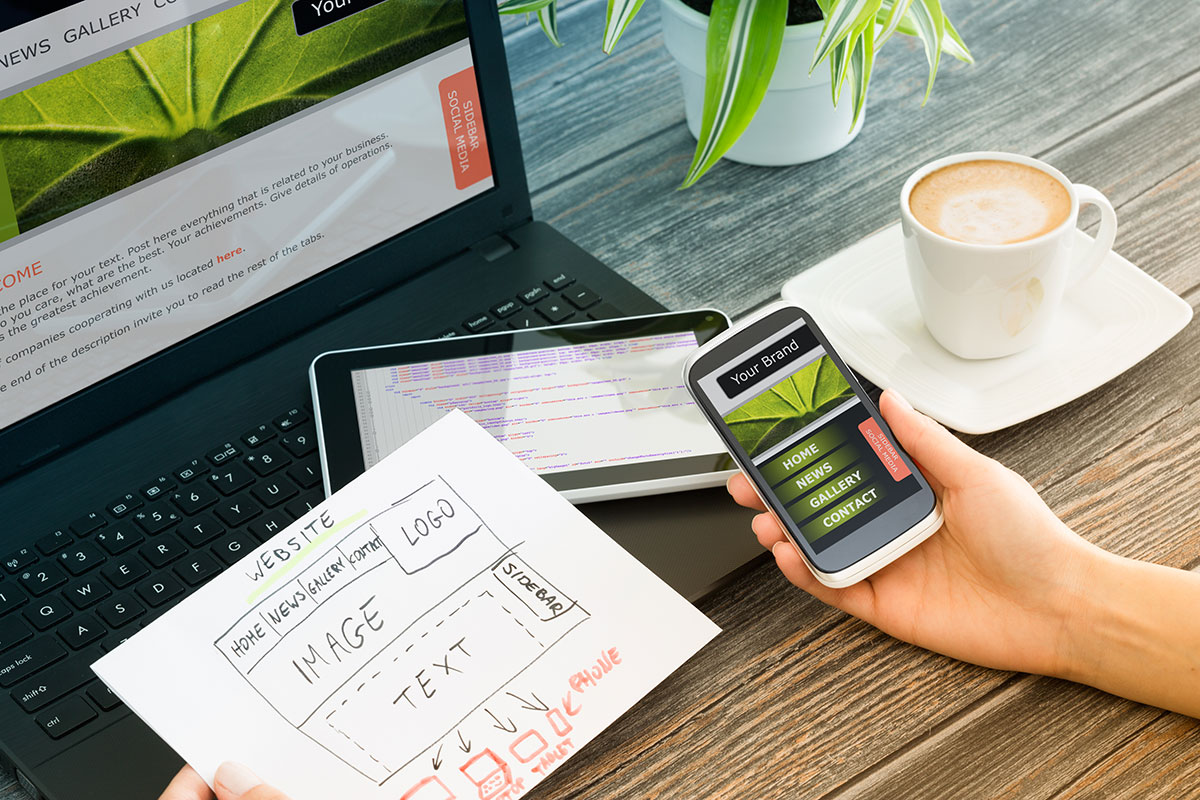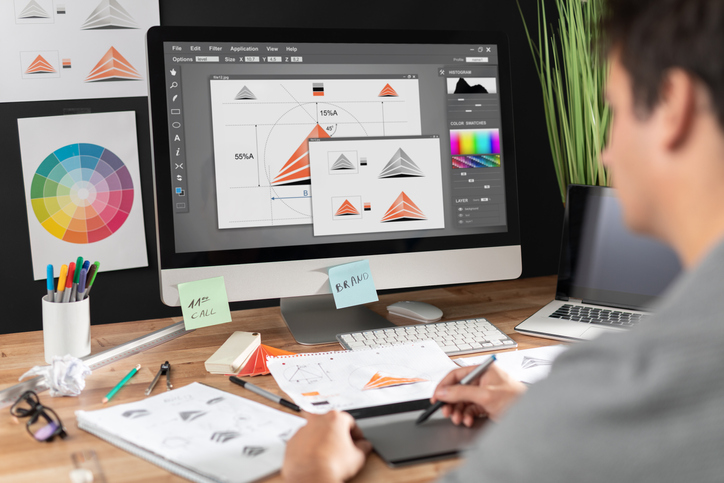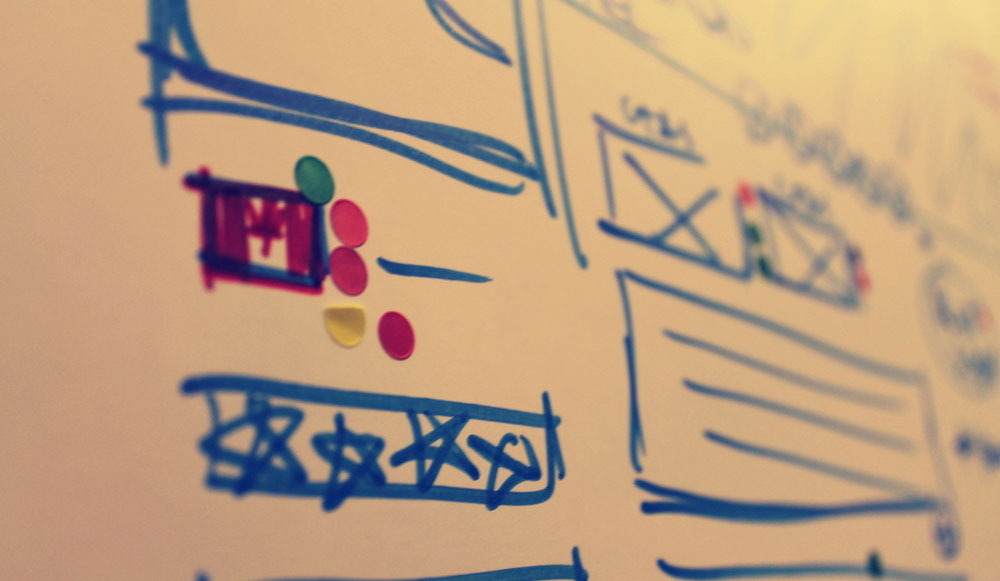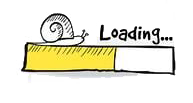Whether you have an existing website or are starting from scratch, your design and development choices can determine how successful you are with the online aspect of your business.
 If you own a business, you need to have an understanding of website design and development. Your website is just as important as a brick-and-mortar store. It helps people form an opinion of your brand and can increase (or decrease) your sales numbers.
If you own a business, you need to have an understanding of website design and development. Your website is just as important as a brick-and-mortar store. It helps people form an opinion of your brand and can increase (or decrease) your sales numbers.
You know that you need a website, but it’s not enough to have a website – you need the right website. Web design and development are the two tools you’ll use to get a functional, aesthetically pleasing site that’ll get your visitors excited about your brand and ready to make a purchase.
Website Design and Development: What’s the Difference?
You’ll often hear the terms web design and web development used interchangeably, and while the two certainly complement one another, there are differences between them.
One easy way to discern between the two is that design focuses on the user while development is focused on the designer. However, both have the same goal of creating a website that users will find helpful and aesthetically pleasing.
Website Design
Website design is user-focused. It concerns what a user sees and how they interact with the site. You can think of design as visuals and interaction, and it’s often created using a visual design program such as Adobe. Terms like UI and UX (which we’ll discuss more below) also fall under design.

Website Development
You can think of development as what goes on behind the scenes. It’s all of the coding and programming that happens in the background that makes the web design become a live website. Front-end and back-end are also part of web development. We’ll discuss these in further detail below.
Why Website Design and Development Are Important for Your Business
Whether you’re a brick-and-mortar with a website looking to expand your online presence or if your business is entirely online, your website is a vital part of your business. It’s a representation of your business, and for some customers, your only chance to make a good impression.
Just as you wouldn’t want your customers to come into your storefront if it was messy, disorganized, or poorly designed, you also don’t want your customers trying to navigate an outdated, unprofessional website.
Your website should represent your brand – an accounting agency’s site will look much different than a brand that sells toys for toddlers. It should also be quick to load and easy to use and navigate. When users have a great experience with your website, they’ll develop a favorable opinion of your company.
Web Design and Development Should Be Part of Your Digital Marketing Strategy
You may have already spent a lot of time creating helpful content that your visitors will love, but optimized content is only one part of Search Engine Optimization (SEO) or making sure your site ranks in search engines. Your site’s design and development also play a prominent role in SEO.
For example, if your site is difficult to navigate, users (and search engine bots) will have a difficult time figuring out what the site is all about. People will leave if it’s cluttered or uses colors or fonts that make it difficult to read. A higher bounce rate leads to lower SEO.
Google does take page speed (the time it takes your page to load) into account for SEO. Programs like Flash and JavaScript are challenging for bots to understand. Responsive design or making sure your site looks great on a variety of devices is also crucial to SEO.
 Main Aspects of Web Design and Development
Main Aspects of Web Design and Development
Elements of Web Design
Web designers are constantly solving problems for their users – and developing problem-solving mechanisms that can be used to solve similar problems in the future. Web design is a question of creating a functional space in which users can easily get from one point to another and do whatever they have come to the site to do. User experience is the main driver of great web design, so each element of a website should be designed and implemented with that goal in mind.
Layout: The layout is the arrangement of all a website’s visual elements: headers, footers, content, images, and buttons. The layout should never be done in a haphazard manner, nor should aesthetics be the only consideration. The decisive factor in layout design is the site’s purpose and the designer’s intentions for how the user is supposed to interact with the site.
A key consideration in the layout is visual hierarchy. The main points of information on a web page should be accessible at a glance. Where more detail is required, the user can then focus on the information provided under bold headings and logos that direct their eyes to where they need to be. Visual hierarchy is the art of determining which visual elements on a website should go where – and which of them need to stand out.
Navigation: When somebody visits a website, they want to be able to move from point A to point B in a way that makes sense, that flows naturally, and that doesn’t require them to search high and low for the right buttons. Navigational tools like menus and search bars enable navigation.
Color: The colors a designer chooses for a website might be determined by the company’s brand, or by the way the content is organized. Actually, it is usually a combination of the two. Colors should be chosen carefully – they must be striking and attractive, but also consistent.
Graphics: Images, logos, icons, and images all fall under the general description – graphics. They must complement the site’s color palette, as well as the company brand.
Speed: A page that loads too slowly can be disastrous for a website. If it takes too long, the user is unlikely to wait. A mere two-second delay can dramatically increase a site’s bounce rate. The optimal loading time is about 1.5 to 2.5 seconds.
Accessibility: It pays to ensure that your website is accessible to as large an audience as possible, regardless of what device, browser, or operating system they are using.
Below are some of the main features of web design and development to keep in mind when designing (or redesigning) a website. Careful attention to each of these elements will ensure that customers not only find your website but that they also stay on your site and perform the actions you want them to.
User Interface (UI)
UI focuses on all the ways a user interacts with a website. It includes things like buttons and links and also text and images. It’s all the small elements of a website – each must be designed individually, but all must come together to form a cohesive site, as seen next in UX.
 User Experience (UX)
User Experience (UX)
UX is one of the critical features of web design. As its name implies, it’s focused on how a user experiences your website. It concerns how they navigate the site and whether it feels intuitive or confusing. UX is all about the user’s overall experience as they interact with the elements developed in the UI, making the two deeply interconnected.
Navigation
Navigation concerns how users move around your site. It involves the location and function of menus, home buttons, and internal links. You want your website to be as easy to navigate as possible for a few reasons.
First, you want users to stay on your site. The longer a user stays, the better the chances of conversion. Additionally, when users spend a long time on your site, it sends a signal to Google that your site has worthwhile information, which can help you rank higher.
Pagespeed
The average human’s attention span is around eight seconds. High-speed internet has made us impatient and given us high expectations for how quickly a page should load. If your page isn’t lightning-quick, visitors will click the back button and look elsewhere. Both design and development involve using the right ideas and the right tools to keep your site light and fast.
 Responsiveness
Responsiveness
Mobile phones make up about 54% of all web traffic. If you aren’t designing your website to look good on any device – mobile, desktop, and tablet – then your visitors may be going elsewhere.
Take a look at your website on your phone. If it’s challenging to read, navigate, or just doesn’t look aesthetically pleasing, you need to make some adjustments.
Google has acknowledged the need for mobile responsiveness and now rewards mobile-friendly sites with higher rankings in the results pages.
Clear Calls to Action
You have a goal for the customers who visit your site. You may want them to make a purchase, join your mailing list, or sign up for a consultation. Whatever the desired action, you must have clear and consistent calls to action (CTAs) for your site.
For example, if you want visitors to sign up for your newsletters, you need to make it as easy as possible to do so. The CTA should be prominent and easy to find. The design should guide your visitors directly to the CTA.
Works on All Browsers
The last thing you want is a website that loads great on Safari, but crashes on Chrome. A web developer will ensure that your site will look and function perfectly on all browsers.
 Branding
Branding
There are many ways you can establish your brand across your site. You can keep your site on-brand by using certain colors, fonts, and types of pictures along with your logo. Everything about your site should convey the specific product or service your business offers.
Accessibility
You want a website that’s accessible for all of your visitors, including those who are differently abled. Follow an accessibility checklist to make sure everyone gets the most from your site.
Visual Design
First and foremost, your website is there to provide helpful information to your customers. However, visual design is also essential. Aesthetic trends in web design are constantly shifting. Your website must keep up with these trends while also staying true to your brand. Try following brands that you know and love to get inspiration, while keeping functionality at the forefront. It’s not always about the next shiny thing!
Engagement
Everything about your web design should be engaging. You want visitors to become customers, and that can only happen if your site holds their attention. If your content is good and your design is functional and enjoyable, visitors will spend a lot of time moving around your pages and will then convert.
Intuitiveness
Just as search engines try to intuit what users want and point them to it, an intuitive site will guide users to complete the desired action. For example, your site may have a blog post that recommends other posts and pages on your site that a customer is likely to move to next (scan through this blog and you’ll see what we mean).
Your site may also be able to predict where a visitor is in the sales funnel and guide them accordingly.
Design and Content Work Together
Your design is there to support and promote your content. After all, visitors don’t come to your site to see what color scheme you’ve chosen for your site. Instead, they’re there because they have a problem or a want. Your content, not your design, can provide them with a solution.
Design and development are there to support that content. Your design should complement your content and never detract from it.
Error Handling
One of the biggest goals of web development is to prevent errors. However, mistakes will happen. One of the best practices of development is error handling, which is what your site tells a visitor when there’s an error. If there’s no error message or if it’s confusing or unhelpful, visitors will be frustrated. The correct error handling can increase the overall UX.
Forms
If there are any sorts of forms on your site, you want them to function correctly and be easy to use. Users shouldn’t have to jump through hoops to submit a form, whether you’re collecting their email to send them a discount or if they’re giving you relevant information to complete a purchase.
Forms should be easy to find and should only require relevant information. Don’t ask for more information than you need. Forms should also be clear on what the user is required to do. Features like automatically moving the cursor to the next tab are also helpful. If they are already in your CRM, pre-populating the fields that you already have are helpful reminders that you know them.
Design vs. Front-End Development vs. Back-End Development
There are essentially two parts to web development: the things that users see and the things they don’t see, or the front-end and the back-end. Web designers have to juggle both as they build a site, balancing the visible parts of the machine with the cogs and gears that turn in the background, so to speak.
The front-end involves everything the user sees in their browser window. Building this part of a site involves visual and functional design and front-end development. Colors, branding, layout, fonts, and images – all of this falls under the banner of front-end development. What does a user see and why? How should elements be positioned on the site to be of optimal use to the visitor and to help meet the aims of the business? These are the essential questions that drive front-end design.
What the user doesn’t see takes place in the background, on a server. These crucial elements are built during the process of back-end development. The back-end is where data is stored and organized. When the user fills out a form on the front end, the information they provide is stored in a database – which is part of the back-end.
The front-end and back-end must work together closely and must thus be developed and built-in tandem. What makes a website function as planned is that these two aspects work and constantly communicate with one another.
What is the no-code movement?
Many people in the world of web development are talking about no-code tools. These are intended to enable people who have no programming knowledge to build their own website elements. No-code tools are typical visual builders on which users can assemble digital assets without having to see any code. The code is written in the background as the user arranges the visual elements on the screen.
The benefit of these tools is that users who can’t write code can still build things online. These users therefore would not have to worry about seeking out the skill of a programmer in order to build their websites (or parts of them, at least). Design costs can thus be reduced and design projects can potentially be completed more quickly.
An example is Duda, which enables designers to build websites visually, without programming skills. The designer can build the site in a visual system, without having to worry about the code at all. The no-code movement essentially makes web design more accessible.
Website Design and Development: KPIs to Consider
Having a beautifully designed website is wonderful, but it’s important to see if the site is actually converting the way you want it to. There are several key performance indicators (KPIs) to take into account.
The main KPI you’ll want to look at is conversion rate or the number of people who complete the desired action on your website vs. the total people who visit. This KPI is important because it doesn’t matter how many visitors you get if the site isn’t converting.
Bounce rate and session duration are also important. Bounce rate is a measure of the people who visit your website and take no action. A high bounce rate signals Google that your site isn’t useful and therefore could effect your organic search rank. Session duration also lets you know how long visitors are staying on your site. You can use these three KPIs to get an idea of whether or not your design is successful.
The Importance of Iteration
Maybe you launched an incredible website a few years ago. Maybe you launched a great website in the past few months. No matter when your site was launched, iteration is an integral part of your web design. The technological world moves quickly and if you want to be competitive, you have to keep up.
A site that was state-of-the-art two years ago is no longer up-to-date. Even if it still looks great to you, to visitors who spend lots of time online, it looks dated. The internet changes quickly and people’s opinions of UX shift over time. You have to update regularly to stay current.
When you launch a new website, your job isn’t over then. You’ll get lots of data after a few months and you’ll see what works and what doesn’t. You’ll need to iterate so that you’re constantly improving and increasing your KPIs.
Parting Thoughts
Whether you have an existing website or are starting from scratch, your design and development choices can determine how successful you are with the online aspect of your business.

Stay Connected